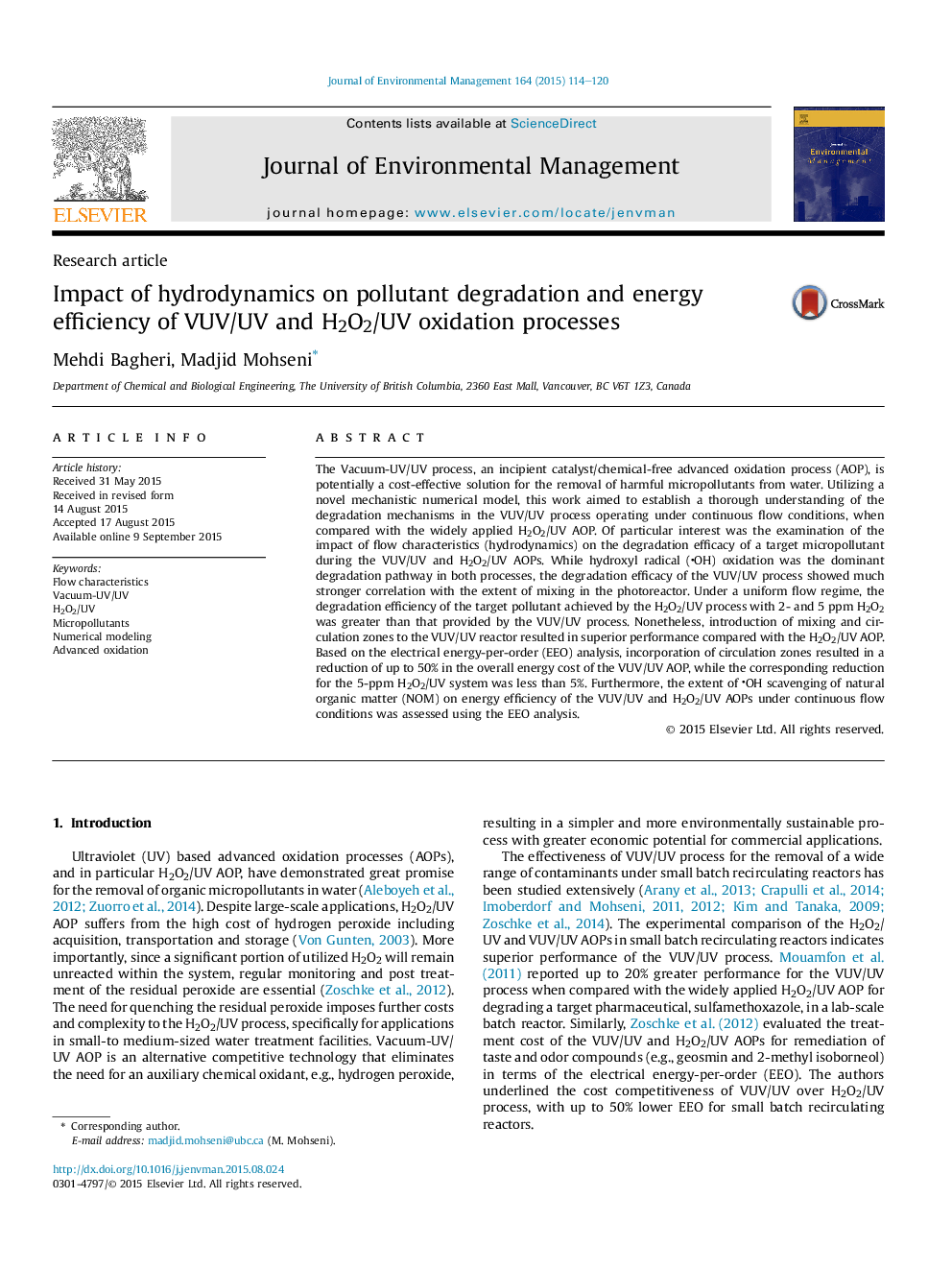| کد مقاله | کد نشریه | سال انتشار | مقاله انگلیسی | نسخه تمام متن |
|---|---|---|---|---|
| 1055414 | 1485248 | 2015 | 7 صفحه PDF | دانلود رایگان |

• Performance of the VUV/UV and H2O2/UV processes is analyzed under continuous flow.
• Formation of OH radical by VUV/UV AOP is compared with that of the H2O2/UV process.
• H2O2/UV AOP provided great contaminant removal under uniform flow conditions.
• VUV/UV AOP provided superior performance under mixed flow conditions aided by baffles.
• NOM has greater impact on scavenging OH during H2O2/UV AOP compared to the VUV/UV
The Vacuum-UV/UV process, an incipient catalyst/chemical-free advanced oxidation process (AOP), is potentially a cost-effective solution for the removal of harmful micropollutants from water. Utilizing a novel mechanistic numerical model, this work aimed to establish a thorough understanding of the degradation mechanisms in the VUV/UV process operating under continuous flow conditions, when compared with the widely applied H2O2/UV AOP. Of particular interest was the examination of the impact of flow characteristics (hydrodynamics) on the degradation efficacy of a target micropollutant during the VUV/UV and H2O2/UV AOPs. While hydroxyl radical (OH) oxidation was the dominant degradation pathway in both processes, the degradation efficacy of the VUV/UV process showed much stronger correlation with the extent of mixing in the photoreactor. Under a uniform flow regime, the degradation efficiency of the target pollutant achieved by the H2O2/UV process with 2- and 5 ppm H2O2 was greater than that provided by the VUV/UV process. Nonetheless, introduction of mixing and circulation zones to the VUV/UV reactor resulted in superior performance compared with the H2O2/UV AOP. Based on the electrical energy-per-order (EEO) analysis, incorporation of circulation zones resulted in a reduction of up to 50% in the overall energy cost of the VUV/UV AOP, while the corresponding reduction for the 5-ppm H2O2/UV system was less than 5%. Furthermore, the extent of OH scavenging of natural organic matter (NOM) on energy efficiency of the VUV/UV and H2O2/UV AOPs under continuous flow conditions was assessed using the EEO analysis.
Figure optionsDownload as PowerPoint slide
Journal: Journal of Environmental Management - Volume 164, 1 December 2015, Pages 114–120